Includes Pioneers In Propeller Development, Supersonic Flight And Man’s Exploration Of Space
The National Aviation Hall of Fame (NAHF) has announced the names of four individuals who have been elected for enshrinement at its annual formal ceremony on Friday, October 2, 2015 in Dayton. On that night they will officially join the roster of 225 men and women air and space pioneers who have been inducted by the NAHF since its founding in 1962.
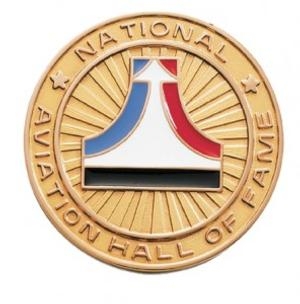
The four names and photos of the incoming Enshrinee Class of 2015 were unveiled at a reception in the NAHF’s Learning Center, an interactive exhibit hall located adjacent to the National Museum of the United States Air Force in Dayton, Ohio. The December 16th announcement date was chosen in part because of its significance as the eve before the anniversary of the Wright Brothers’ first powered flight at Kitty Hawk on December 17, 1903. The Wrights were the first two to be enshrined into the Hall back in 1962.
Each year, the NAHF Board of Nominations, a voting body comprised of over 120 aviation professionals nationwide, selects a handful of previously nominated air and space pioneers to be recognized for their achievements with enshrinement into the NAHF. The NAHF Class of 2015 is a diverse group representing a broad range of enduring contributions to both the advancement of flight and the manned exploration of space. The four to be formally enshrined on October 2, 2015, are:
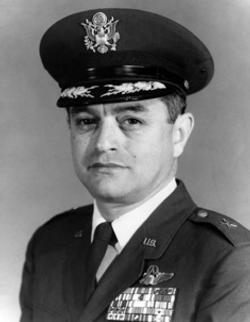
Brig. General Robert L. Cardenas, USAF (Ret) (pictured)– After flying combat as a B-24 pilot in Europe, Cardenas graduated from test pilot school in 1945. He was instrumental as the B-29 mothership pilot and operations officer on the record-breaking X-1 program and as chief pilot on the XB-49 flying wing program. He commanded a combat wing of F-105′s in Southeast Asia and later the Air Force Special Operations Force.
The late Robert N. Hartzell – Son of an Ohio woodworker, Hartzell was inspired by neighbor Orville Wright to explore propeller manufacturing. By WWI, Hartzell’s company provided propellers used on “Liberty” engines. After briefly manufacturing its own aircraft, the company focused on supplying wood propellers to its customers and metal propellers used on WWII aircraft. Postwar, Hartzell additionally developed lightweight and controllable propellers that spurred worldwide development of the general aviation industry.
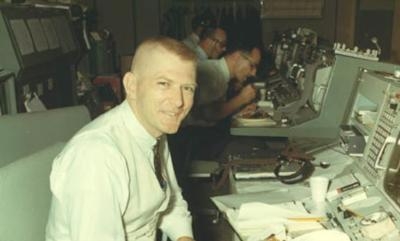
Eugene “Gene” Kranz – Kranz (pictured) flew fighters in Korea and was an Air Force flight test engineer before joining NASA’s Space Flight Group in 1960, where he rose through roles in flight operations with the progression of the Mercury, Gemini, Apollo and Shuttle programs. His 37 years of federal service include serving as Flight Director during the Apollo 13 mission and as NASA Director of Mission Operations, responsible for over 6,000 employees and a $700 million budget.
The late Abe Silverstein – A mechanical engineer and aerodynamicist who contributed to the improvement of WWII and early supersonic aircraft, Silverstein transitioned from NACA to NASA in 1958, becoming its first Director of the Office of Space Flight Programs. Credited as the architect of the space program and as the Father of Apollo, his vision led man’s way to the moon and the exploration of other planets.
The 53rd Annual NAHF Enshrinement Dinner & Ceremony will take place on Friday, October 2, 2015 at the National Aviation Hall of Fame Learning Center and the adjacent National Museum of the United States Air Force in Dayton, Ohio. Often referred to as “America’s Oscar Night of Aviation,” the black-tie ceremony is open to the public and reservations are available by advance purchase from the NAHF.
(Images provided by NAHF. Hartzell (L) and Silverstein (R) pictured below)
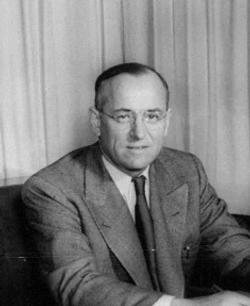
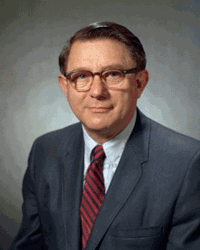
 Airborne 10.14.25: Laser Threat, VeriJet BK, Duffy Threatens Problem Controllers
Airborne 10.14.25: Laser Threat, VeriJet BK, Duffy Threatens Problem Controllers Airborne 10.15.25: Phantom 3500 Confounds, Citation CJ3 Gen2 TC, True Blue Power
Airborne 10.15.25: Phantom 3500 Confounds, Citation CJ3 Gen2 TC, True Blue Power Aero-News: Quote of the Day (10.17.25)
Aero-News: Quote of the Day (10.17.25) NTSB Prelim: Piper PA-28-180
NTSB Prelim: Piper PA-28-180 ANN FAQ: Contributing To Aero-TV
ANN FAQ: Contributing To Aero-TV







